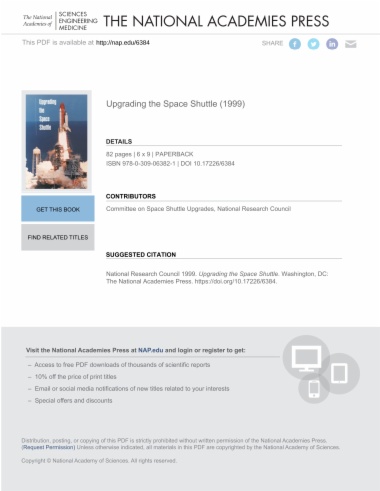

The space shuttle is a unique national resource. One of only two operating vehicles that carries humans into space, the space shuttle functions as a scientific laboratory and as a base for construction, repair, and salvage missions in low Earth orbit. It is also a heavy-lift launch vehicle (able to deliver more than 18,000 kg of payload to low Earth orbit) and the only current means of returning large payloads to Earth. Designed in the 1970s, the shuttle has frequently been upgraded to improve safety, cut operational costs, and add capability. Additional upgrades have been proposed-and some are under way-to combat obsolescence, further reduce operational costs, improve safety, and increase the ability of the National Aeronautics and Space Administration (NASA) to support the space station and other missions.
In May 1998, NASA asked the National Research Council (NRC) to examine the agency's plans for further upgrades to the space shuttle system. The NRC was asked to assess NASA's method for evaluating and selecting upgrades and to conduct a top-level technical assessment of proposed upgrades.